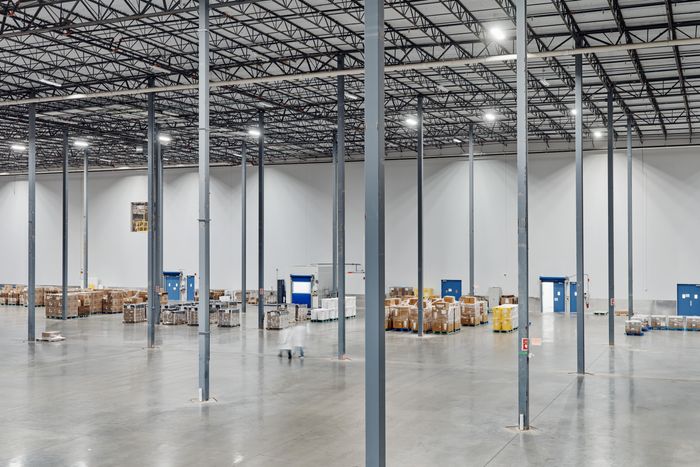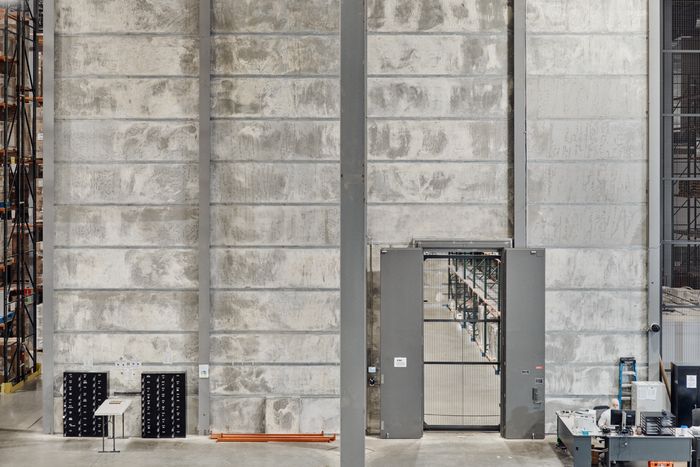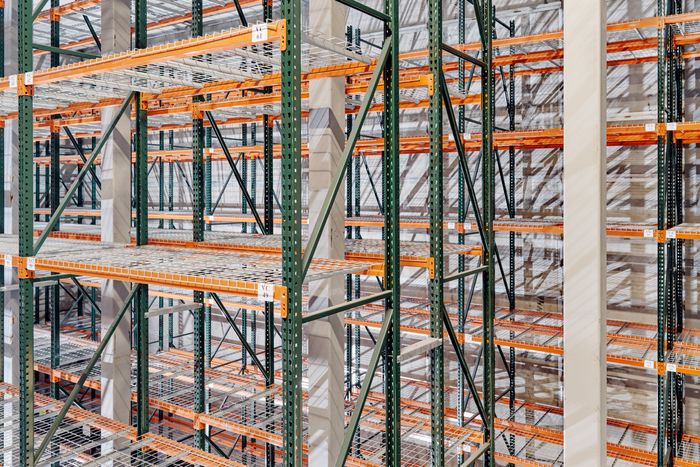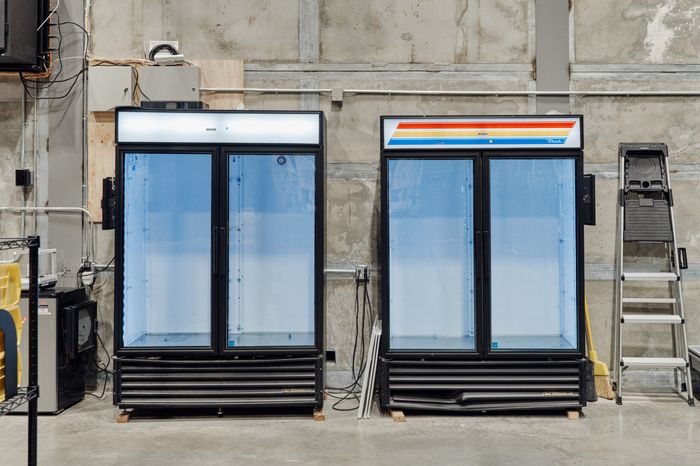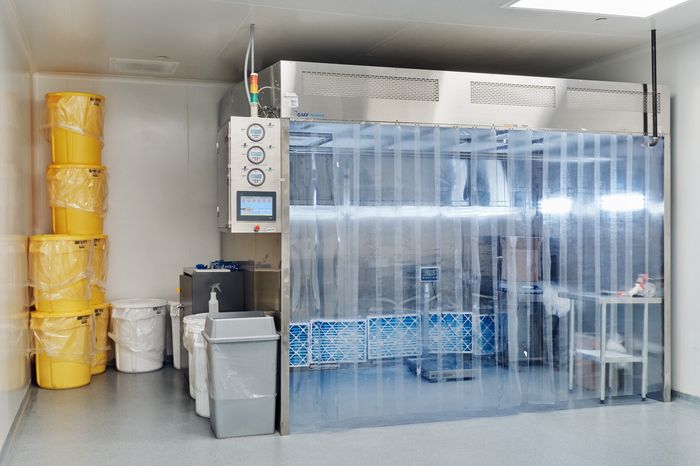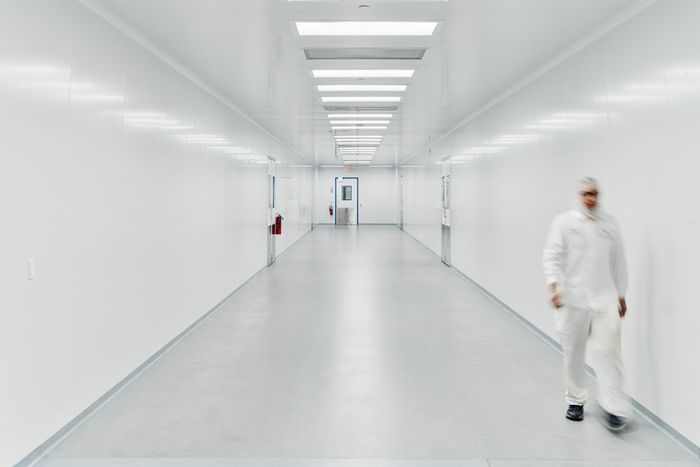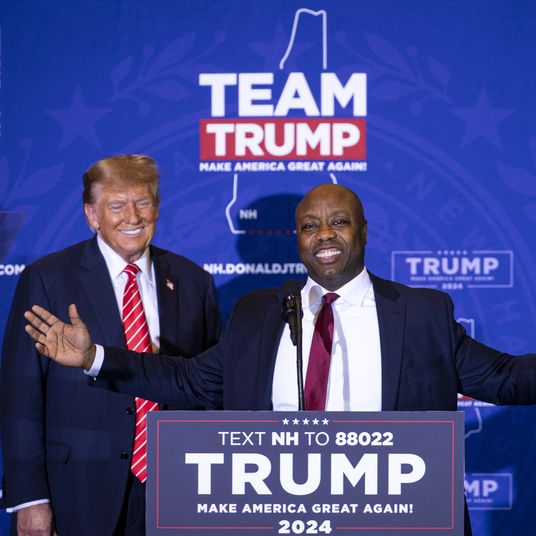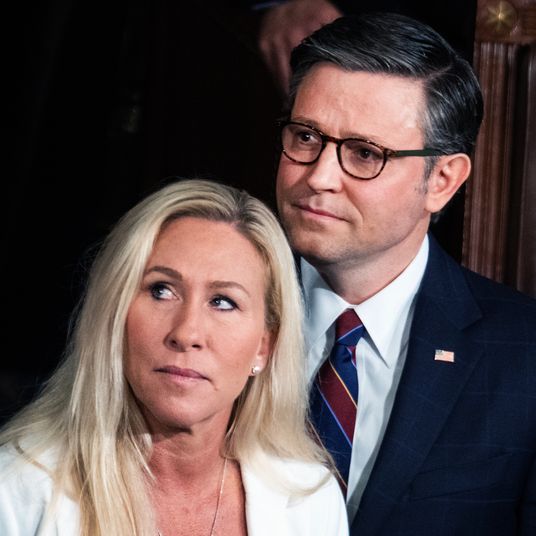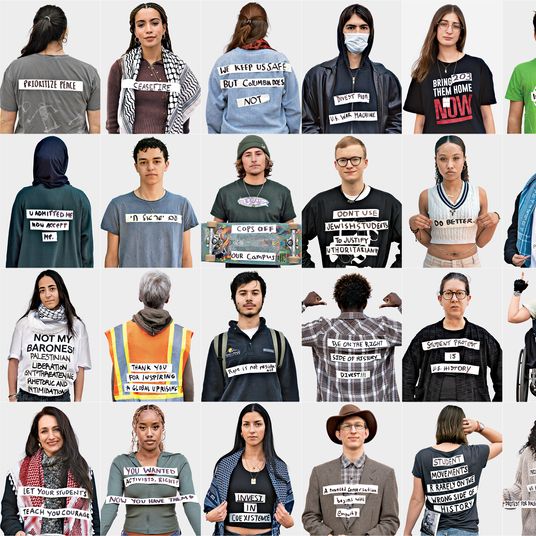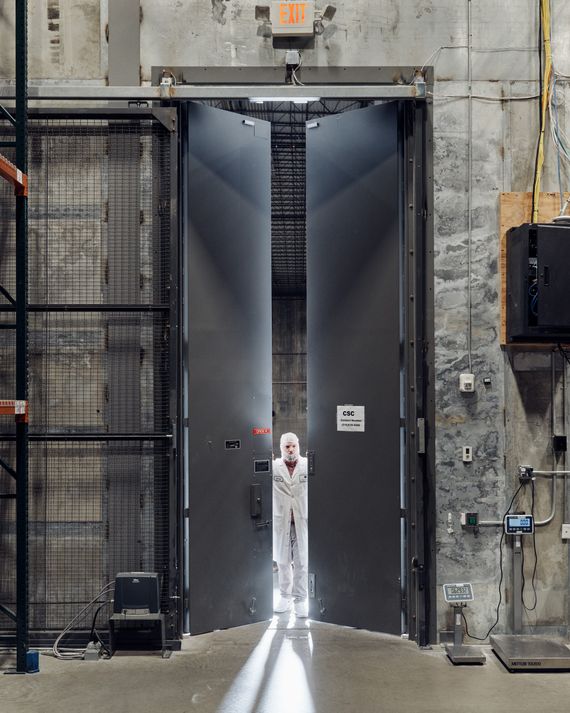
This article was featured in One Great Story, New York’s reading recommendation newsletter. Sign up here to get it nightly.
One afternoon last February, a distraught mother in Queens called Ascent Pharmaceuticals, a drug manufacturer that operates out of Central Islip, Long Island, with an unusual request. She wanted to know if the company could bypass her pharmacy and directly fill her son’s prescription for the medication he took to treat attention deficit hyperactivity disorder. Ascent isn’t in the business of distributing a few pills here and there: In 2022, according to one research firm, it produced 12 percent of the country’s generic version of Adderall and large amounts of its generic Concerta, Ritalin, and Vyvanse. But now there was a global shortage of the drugs, and inquiries from people desperate to fill a prescription were becoming more common.
An hour after the Queens call, someone in Rancho Santa Margarita, California, rang Ascent with a similar question. Then another woman got in touch, saying she’d contacted 30 pharmacies without any luck. In the months ahead, Ascent fielded a dozen more calls from patients across the U.S. They all received some version of the same answer: Ascent had no information to give them.
“It’s been very, very frustrating,” says Meghana Vidiyala, Ascent’s director of project management. “We want to help during this shortage, but we can’t.”
There’s been a national shortage of ADHD medication for more than a year and a half. According to the government and industry experts, there are multiple overlapping causes: manufacturing problems, labor issues, supply-chain failures, and a huge rise in demand during the pandemic. But Ascent claims there’s another factor exacerbating the shortage, one that’s completely sui generis: the fact that it’s been shut down by the Drug Enforcement Administration.
The agency has accused Ascent of shabby recordkeeping that might have allowed millions of pills to go unaccounted for. Ascent makes painkillers in addition to stimulants, and, amid the ongoing opioid epidemic, the DEA has been under pressure to show it is aggressively policing the industry. (The agency did not respond to requests for comment.) Ascent has said that its paperwork is in order and has sued the Department of Justice to get its assembly lines working again.
A resolution doesn’t seem likely anytime soon. In the meantime, the company is producing zero ADHD meds. If its claims are true, that’s 600 million doses per year missing from the market. As Ascent says in its lawsuit, “Turning off that supply is making a grave situation infinitely worse.”
Inside Ascent’s 320,000-square-foot factory in Central Islip, a labyrinth of sterile white hallways connects 105 manufacturing rooms, some of them containing large, intricate machines capable of producing 400,000 tablets per hour. In one of these rooms, Ascent’s founder and CEO — Sudhakar Vidiyala, Meghana’s father — points to a hulking unit that he says is worth $1.5 million. It’s used to produce time-release Concerta tablets with three colored layers, each dispensing the drug’s active ingredient at a different point in the tablet’s journey through the body. “About 25 percent of the generic market would pass through this machine,” he says. “But we didn’t make a single pill in 2023.”
The public normally doesn’t get to see inside a pharmaceutical facility like this, and on a recent tour, I’m joined by the Vidiyalas and a phalanx that includes the founding partner of a law firm, a media specialist who’s flown in from Washington, a former DEA compliance officer turned pharma consultant, and Ascent’s CFO. The group suits up in gowns and hairnets to observe the limited operations at the plant, which is still permitted to make drugs with non-controlled substances, such as ibuprofen and acetaminophen. In one room, an employee climbs a stepladder to scoop powder into the top of a machine. Someone in the group compares the process of making Adderall and other drugs to “baking a cake”: The ingredients must be sifted, mixed, and poured according to a recipe. The place is a literal confectionery.
The tour ends in the company’s warehouse, which is unremarkable save for its size and an enormous vault nested inside. The effect is a little like coming upon the Temple of Dendur at the Met. The vault is built to the government’s security specifications — the floor, ceiling, and walls are all made of concrete ten inches thick, and the towering doors are guarded 24 hours a day. Ordinarily, this is where Ascent stores huge volumes of the controlled substances it needs to make drugs and the finished doses before they are shipped to its wholesaler, Camber Pharmaceuticals. (Both Ascent and Camber are owned by Hetero, a pharma company based in India.) Instead, it sits almost entirely empty. “It’s tough to see,” says Sudhakar. “I still can’t really digest it.”
To make Schedule II drugs, pharmaceutical companies must submit applications to the DEA for allotments of raw chemical components. In Ascent’s case, that includes amphetamine (an active ingredient in Adderall), methylphenidate (Ritalin and Concerta), and lisdexamfetamine (Vyvanse). The system allows the DEA to control the nation’s supply of dangerous substances, monitoring them from their inception as aggregate batches of raw molecules to their dispersion at the pharmacy in the form of finished tablets, capsules, or other form factors.
In the spring of 2022, Ascent submitted a new batch of quota applications, anticipating the DEA would approve them by July. Instead, the agency informed Ascent that it would be audited. Investigators visited Ascent’s offices to examine its books, and in November, an attorney asked the company to explain some discrepancies the agency had found.
The government learned that Ascent kept two sets of DEA Form 222 — a standard regulatory form that tracks every batch of raw material that enters a factory and every finished pill that is shipped out. Ascent’s employees maintained one set of what the company called “working” 222s and one set of “official” ones that it filed to the government. To the DEA, this was impermissibly sloppy.
Sudhakar insists that, ultimately, his employees documented everything properly. “Every single time DEA identified a variation, we showed that there was actually zero missing. We have an invoice for each pill that we produced,” he says. But the company has acknowledged that it committed infractions. For example, orders struck from 222s must be crossed out with a line and the word cancel written next to them. Investigators found two instances in which Ascent employees had drawn the line but failed to write the word.
“This was a paper discrepancy,” said Jim Walden, Ascent’s attorney. “No one shuts down a company for that.” In May 2023, after more than a year of going back and forth with the DEA, Ascent began laying off workers. In September, Walden filed a lawsuit to compel the government to give a formal response to Ascent’s 2023 quota request. The next day, the DEA served the company with an “order to show cause” — a notice that it intended to revoke its registrations as a drug manufacturer and analytical lab.
A major public announcement came on October 31. The DEA revealed that its probe into Ascent had been part of an investigation called Operation Bottleneck, an effort to rein in lax recordkeeping by drug manufacturers that had contributed to the opioid epidemic. “These companies have a legal obligation to account for every dose and every pill,” Anne Milgram, head of the DEA, said in a press release. In the face of an ongoing epidemic that had taken more than 110,000 lives in 2022, the DEA was “using every available tool to prevent the diversion and misuse of opioids and other highly addictive controlled substances.”
The DEA didn’t distinguish between Ascent’s production of ADHD meds, which are stimulants, and its painkillers, which are narcotics. (According to Walden, 80 percent of the company’s controlled-substances revenue comes from stimulants and 20 percent from painkillers.) It alleged that Ascent had “failed to make records available for inspection in a timely manner and shipped controlled substances without producing required documentation” and that it “did not accurately account for millions of dosages” of oxycodone, methylphenidate, hydrocodone, amphetamines, and other drugs.
For the DEA, Operation Bottleneck was a step toward redemption. During the painkiller epidemic, as state attorneys general and local governments brought hundreds of cases against opioid manufacturers and distributors, they routinely cited the DEA’s poor monitoring of the companies’ records as a factor that helped flood the country with OxyContin and similar drugs. Those suits eventually compelled large drug companies to pay $26 billion — the biggest such settlement since the tobacco case of 1998. “DEA got the crap beat out of them,” says Krista Tongring, a former section chief in the agency’s office of compliance who now consults for Ascent. “They’re like, ‘We have to do something.’”
Ascent’s lawsuit against the DEA describes the agency’s sanctions as “a clear and ill-conceived overcorrection and reaction to the criticism it received for mishandling of opioid abuse.” The suit also goes further, alleging that the DEA’s action reflects “a drug policy that is focused on controlling supply.” That language comes close to accusing the DEA of backdoor policy-making through regulation, as if the shortage of ADHD medications is the agency’s intent. Experts I spoke to dismissed that theory as far-fetched. “The DEA is a pretty straight agency. I can’t see them getting together with the FDA and saying, ‘Let’s just restrict quota.’ There must be a justification to increase or decrease quota,” says Joseph Rannazzisi, a former deputy assistant administrator of the DEA office of diversion control, the division that investigates the pharmaceutical industry.
That said, Rannazzisi — who was one of the first DEA officials to challenge drug companies for feeding the country’s nascent opioid addiction in the mid-2000s — is alarmed by the rapid rise in prescriptions for Adderall and similar drugs in recent years. “Everybody is concerned about the increase in use of stimulants, not just the DEA and the FDA,” says Rannazzisi. “The bottom line is that I think we do have a problem.”
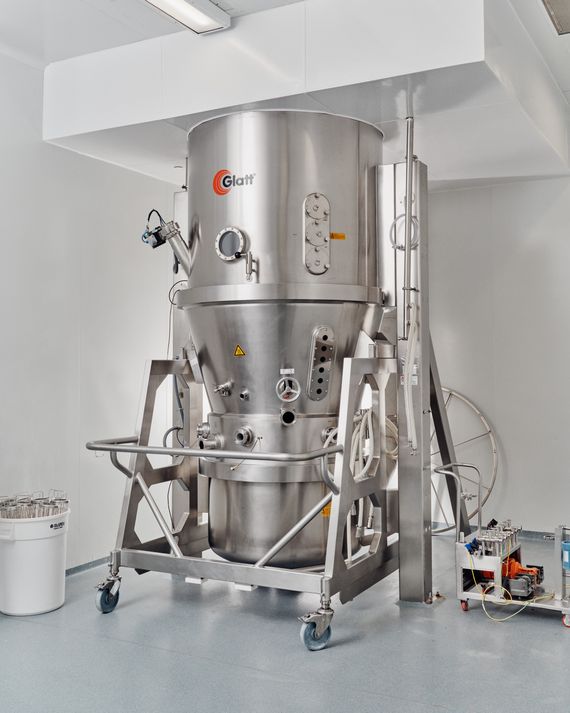
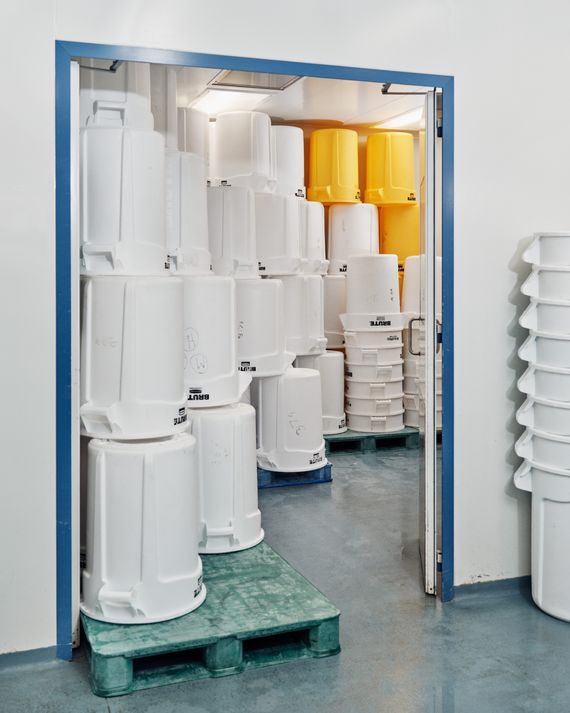
No one doubts ADHD stimulants’ potential for abuse and addiction. Adderall’s active ingredient is amphetamine, a drug that functions in some ways like cocaine. Both deliver excess dopamine to the brain, enhancing motivation and concentration, and the cocainelike effect of stimulants is enhanced when they’re snorted. Hence the long-standing nickname for Concerta and Ritalin: Diet Coke. “There is a fear that the overuse of prescribed amphetamines could lead to the equivalent of another opioid epidemic,” said Dr. Joshua Sharfstein, who served as the FDA’s principal deputy commissioner under Barack Obama.
ADHD is a well-documented neurodevelopmental disorder, but it’s unclear how many people suffer from it. Some studies put the range at 3 to 5 percent of the population, while others estimate it’s as high as 15 percent. That’s because definitions and diagnoses of ADHD vary, and can involve factors that are hard to measure objectively. The DSM instructs evaluators to use a scoring method in which points are assigned if, say, a patient “often has difficulty organizing tasks” or “often loses things.” Some doctors may still use a version of the Conners Rating Scale, the first ADHD test developed in the 1970s. The scale’s developer later expressed deep concern over how easily evaluators were making the diagnosis. “The numbers make it look like an epidemic. Well, it’s not. It’s preposterous,” Dr. Keith Conners told the New York Times in 2013, four years before his death. “This is a concoction to justify the giving out of the medication at unprecedented and unjustified levels.”
Providers wrote more than 73 million prescriptions for stimulants in 2021, up 45 percent from about a decade earlier. Doctors now use the drugs to treat a range of issues beyond ADHD, including narcolepsy and long COVID, and for behavioral and mood regulation in children. Notably, usage during the pandemic soared among adults, many of whom were struggling with unstructured days.
No one can say how much of the recent surge in prescriptions is attributable to late diagnoses of ADHD versus misdiagnoses, but one thing is clear. It became much easier to get a prescription during the pandemic, in part because the DEA began allowing health-care providers to write prescriptions for controlled substances without meeting patients in person. The change allowed telehealth providers to issue stimulant prescriptions after relatively short video consultations, and many believe the shift ushered in abuse. In April 2022, a former executive at Cerebral, a telehealth start-up, filed a lawsuit claiming the company had pushed prescribers to write more scripts for ADHD meds because its data showed that patients were more likely to remain Cerebral customers if they’d been prescribed a stimulant. (A spokesperson for Cerebral denied the allegations, saying the company has never instructed providers to prescribe any drug in any quantity.) Cerebral stopped issuing the prescriptions the next month and disclosed that federal investigators had begun looking into the company; no charges were brought.
Telehealth prescriptions are still permitted by the DEA, but many pharmacists at large chains, including Walmart, CVS, and Walgreens, are reluctant to fill them. To many observers in the industry, concerns about abuse of ADHD medications are outweighed by the harm done to the people with genuine diagnoses who can’t access the pills they need to function.
Across the country, people unable to fill their prescriptions for Adderall and similar stimulants have been driven to extremes. They’ve rationed, splitting up tablets or breaking up capsules; they’ve spent hours driving to distant pharmacies; they’ve purchased pills on Craigslist or sought out dubious distributors in Mexico — anything to get their medication. “It’s a strange experience to be calling a pharmacist and getting heated saying, ‘I need this medication! When is it going to be in?!’” says a marketing director who went a month without her pills recently. “Why does it feel like I’m being treated like an addict?”
For some, a rise in stimulant prescriptions shouldn’t be a five-alarm fire at the DEA because the drugs simply don’t carry the same risks as opioids. “This isn’t an issue where people are dying from Adderall. They’re creating a fake epidemic,” says Jack Teitelman, a former DEA agent. He is now the president of Titan Group, which advises pharmaceutical manufacturers on compliance.
I also spoke to Heather Ferrarese, the second-generation owner of Bartle’s Pharmacy, which serves the 1,370 upstate residents of Oxford from a small storefront near a park lined with ginkgo and honey-locust trees — the picture of a small-town pharmacy. During the shortage, Ferrarese has been getting calls from people who live hours away, but she’s hesitant to take on new customers trying to fill ADHD scripts. “The last thing you want to do as a pharmacy is look like you’re an Adderall-pill mill,” Ferrarese says. “We don’t want to attract any unnecessary attention from the DEA.”
Ferrarese has a hard enough time filling prescriptions for her regulars. In January, the mother of a child with special needs tried to fill a prescription for FocalinXR, but Ferrarese had only two of the pills in stock and no way of getting more. The mother took the two pills, but doing so voided the prescription’s remaining 28 doses. (She later found another pharmacy with 11 pills, but getting them required obtaining another prescription.)
“This poor child has been through probably 20 different medications before they found something that was effective and working for him,” Ferrarese says. “To have to look at a mom with a special-needs child that needs this medication and say, ‘Honestly, I don’t know what you’re going to do because we can’t get any more. We can’t get name-brand, we can’t get generic. There is just literally no option available.’ That’s very difficult. It puts everybody in a bind.”
For Ascent, one of the more frustrating parts of being told by the government to stop making Adderall is that other parts of the government have pleaded with the company to make more. The company says that on multiple occasions, officials from the FDA asked it to increase production in response to the shortage, and that Ron Wyden, the Democratic senator from Oregon, also pressed Ascent for help. They received responses similar to those the company gave the stressed-out callers looking for pills: Ascent didn’t have any information. Instead, the company directed them to the DEA.
More on adderall
- SBF’s New Plan to Win in Court: Adderall
- Where’s the Urgency on the Adderall Shortage?
- Chuck Schumer Endorses Caffeine, Drinking Outside



